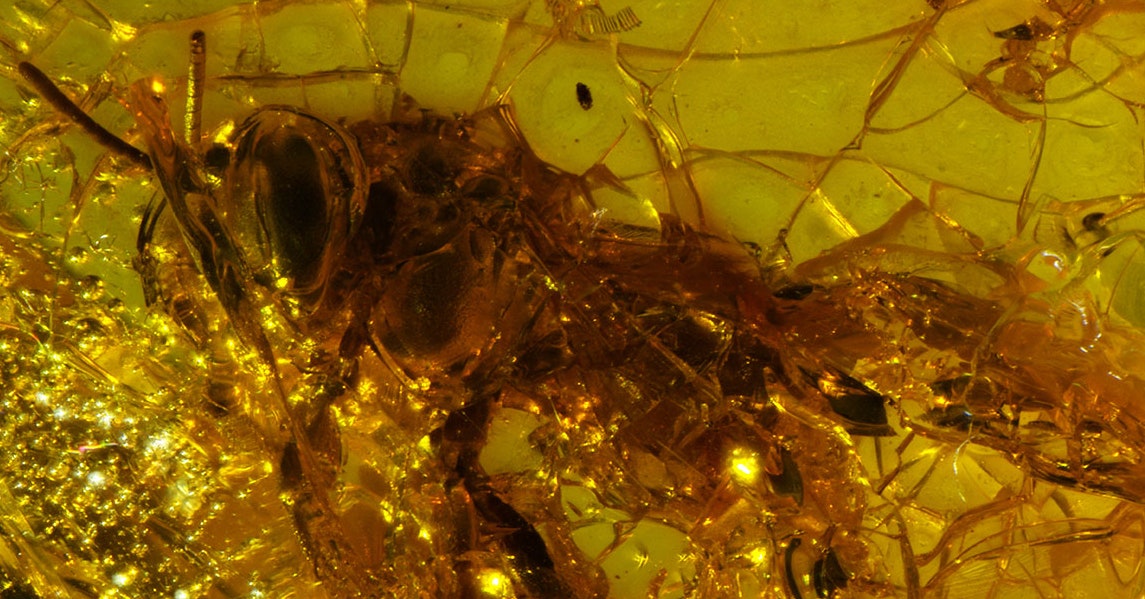
Even some species that are found while they are still alive are already on the brink. In fact, research suggests that it’s precisely the newly described species that tend to have the highest risk of going extinct. Many new species are only now being discovered because they’re rare, isolated, or both—factors that also make them easier to wipe out, said Fraga. In 2018 in Guinea, for instance, botanist Denise Molmou of the National Herbarium of Guinea in Conakry discovered a new plant species that, like many of its relatives, appeared to inhabit a single waterfall, enveloping rocks amid the bubbly, air-rich water. Molmou is the last person known to have seen it alive.
Just before her team published their findings in the Kew Bulletin last year, Cheek looked at the waterfall’s location on Google Earth. A reservoir, created by a hydroelectric dam downriver, had flooded the waterfall, surely drowning any plants there, Cheek said. “Had we not got in there, and Denise had not gotten that specimen, we would not know that that species existed,” he added. “I felt sick. I felt, you know, it’s hopeless, like what’s the point?” Even if the team had known at the point of discovery that the dam was going to wipe it out, Cheek said, “it’d be quite difficult to do anything about it.”
While extinction is likely for many of these cases, it’s often hard to prove. The IUCN requires targeted searches to declare an extinction—something that Costa is still planning on doing for the killifish, four years after its discovery. But these surveys cost money, and they aren’t always possible.
Meanwhile, some scientists have turned to computational techniques to estimate the scale of dark extinction, by extrapolating rates of species discovery and extinctions among known species. When Chisholm’s group applied this method to the estimated 195 species of birds in Singapore, they estimated that 9.6 undescribed species have vanished from the area in the past 200 years, in addition to the disappearance of 58 known species. For butterflies in Singapore, accounting for dark extinction roughly doubled the extinction toll of 132 known species.
Using similar approaches, a different research team estimated that the proportion of dark extinctions could account for up to just over a half of all extinctions, depending on the region and species group. Of course, “the main challenge in estimating dark extinction is that it is exactly that: an estimate. We can never be sure,” noted Quentin Cronk, a botanist of the University of British Columbia who has produced similar estimates.
Considering the current trends, some scientists doubt whether it’s even possible to name all species before they go extinct. To Cowie, who expressed little optimism that extinctions will abate, the priority should be collecting species, especially invertebrates, from the wild so there will at least be museum specimens to mark their existence. “It’s sort of doing a disservice to our descendants if we let everything just vanish, such that 200 years from now, nobody would know the biodiversity—the true biodiversity—that had evolved in the Amazon, for instance,” he said. “I want to know what lives and lived on this Earth,” he continued. “And it’s not just dinosaurs and mammoths and what have you; it’s all these little things that make the world go round.”
Other scientists, like Fraga, find hope in the fact that the presumption of extinction is just that—a presumption. As long as there’s still habitat, there’s a slim chance that species deemed extinct can be rediscovered and returned to healthy populations. In 2021, Japanese scientists stumbled across the fairy lantern Thismia kobensis, a fleshy orange flower only known from a single specimen collected in 1992. Now efforts are underway to protect its location and cultivate specimens for conservation.
Fraga is tracking down reported sightings of a monkeyflower species she identified in herbaria specimens: Erythranthe marmorata, which has bright yellow petals with red spots. Ultimately, she said, species are not just names. They are participants of ecological networks, upon which many other species, including humans, depend.
“We don’t want museum specimens,” she said. “We want to have thriving ecosystems and habitats. And in order to do that, we need to make sure that these species are thriving in, you know, populations in their ecological context, not just living in a museum.”

